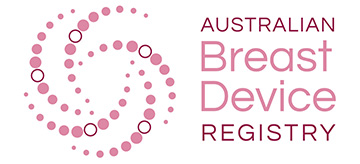ABDR talks implant surveillance
September 6, 2017
ABDR paper MJA podcast and ABC RN Health Report
Hear ABDR Project Lead, Dr Ingrid Hopper, talk about post market surveillance of breast implants following release of the registry’s latest paper.
(Image credit ABC RN Health Report and MJA)
Implant-lymphoma link shows importance of registry
A paper published in the Medical Journal of Australia, involving Monash University researchers, stresses the importance of long-term post market surveillance of breast implants by a clinical quality registry as essential for patient health and well-being.
Their comments in the Perspectives paper come in the wake of a likely causal link between breast implants and a rare form of cancer called Breast Implant Associated Anaplastic Large Cell Lymphoma (BIA-ALCL) announced by the Therapeutic Goods Administration last year.
Dr Ingrid Hopper is the lead author of the paper and head of the Drugs and Devices Registries at the School of Public Health and Preventive Medicine, Monash University. She project leads the Australian Breast Device Registry (ABDR), the first registry in the world to be supported by all craft groups performing implant surgery; plastic and reconstructive surgeons, cosmetic surgeons and general breast surgeons.
“The Australian Breast Device Registry is a very important health initiative. The registry facilitates early detection of possible trends and complications associated with breast implants, such as rates of contractures, implant rupture and BIA-ALCL,” Dr Hopper said.
The MJA authors agreed: “The Australian Breast Device Registry has a pivotal role to play in furthering our understanding of BIA-ALCL, as well as monitoring the occurrence of other known and unanticipated adverse events.”
Funded by the Australian Department of Health, the ABDR also tracks and monitors the performance of breast tissue expanders and dermal matrices.
More than 17,000 Australians are currently enrolled in the opt-out registry.
The authors suggested three strategies to maximise the capture of high quality data for long-term post market surveillance of breast implants: contribution to the ABDR is made compulsory for membership to collaborating surgical societies; device manufacturers should provide financial support for the ABDR’s work; and industry should provide accurate sales data to give a baseline of the number of devices implanted annually.
Dr Hopper recommended anyone having breast implants inserted or removed, should ask their surgeon to include their details in the registry.
“The ABDR is a confidential, secure, free service, supported by more than 300 surgeons nationally,” Dr Hopper said.
For more information about breast implants and Anaplastic Large Cell Lymphoma, please visit the TGA website.



